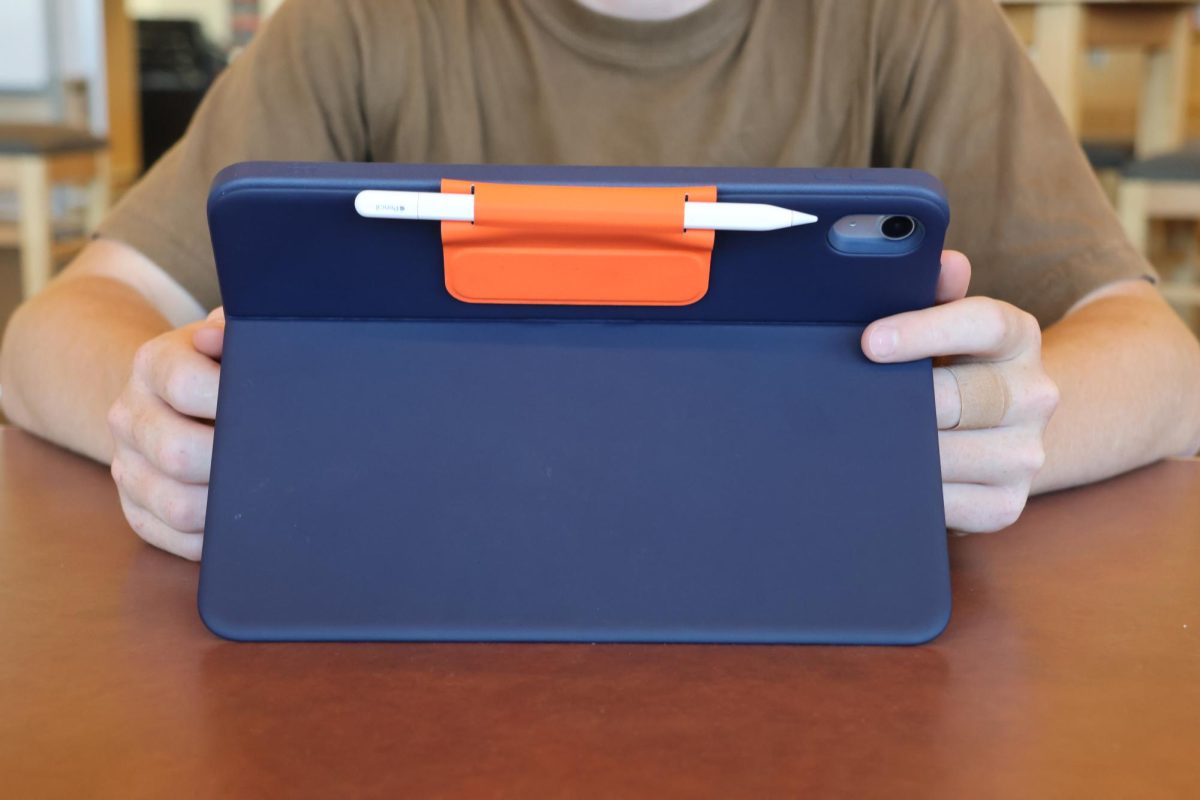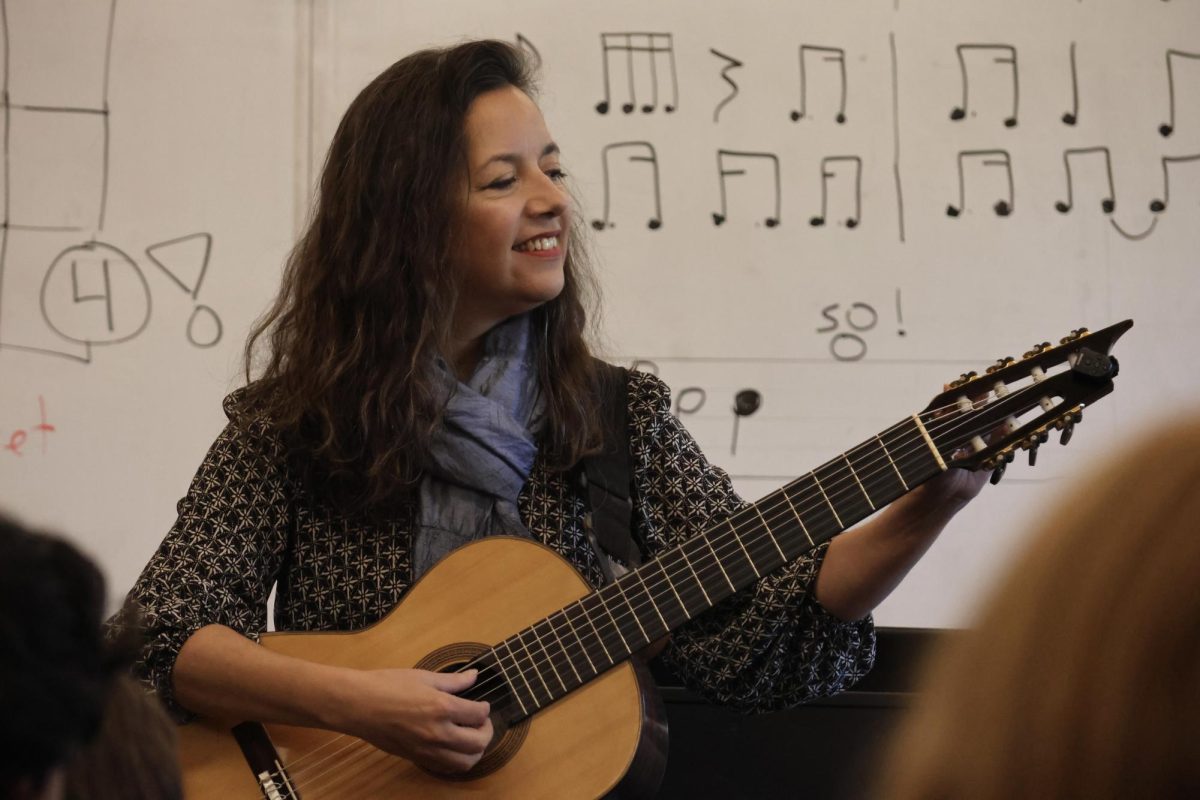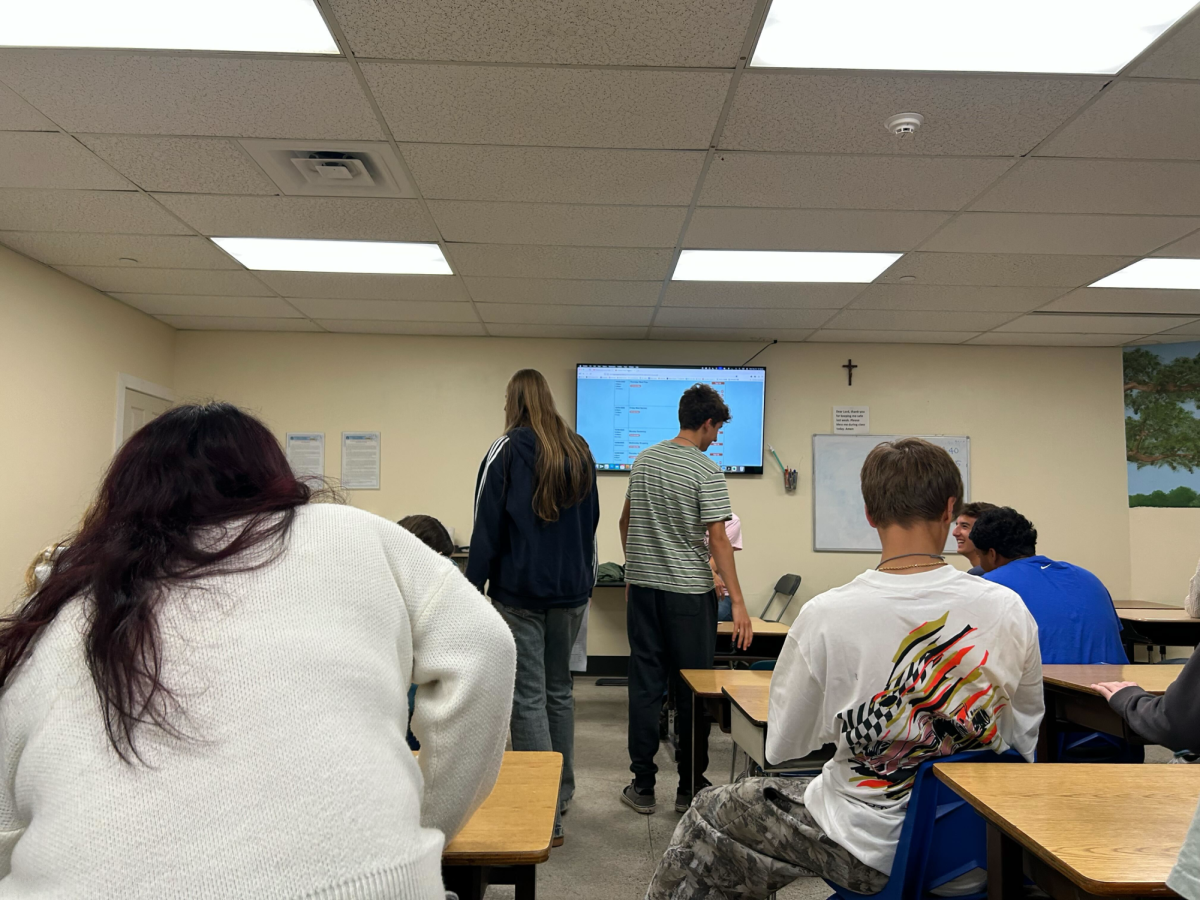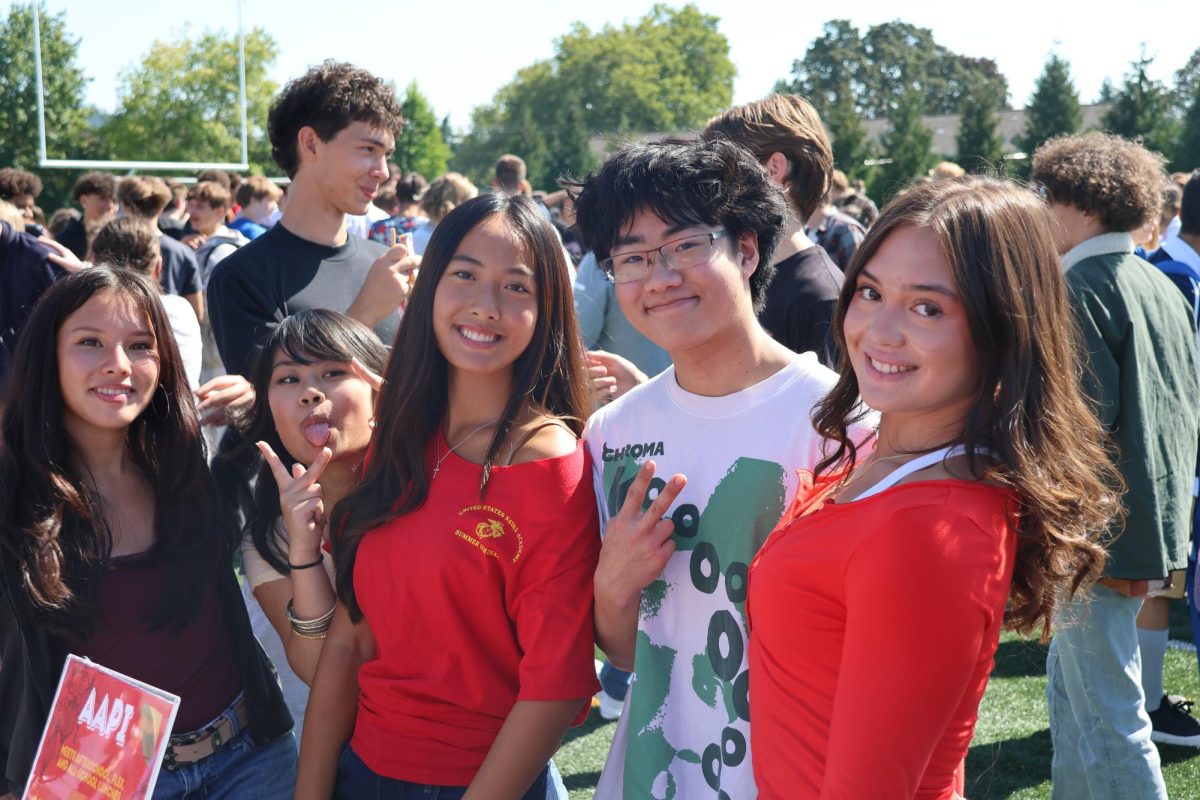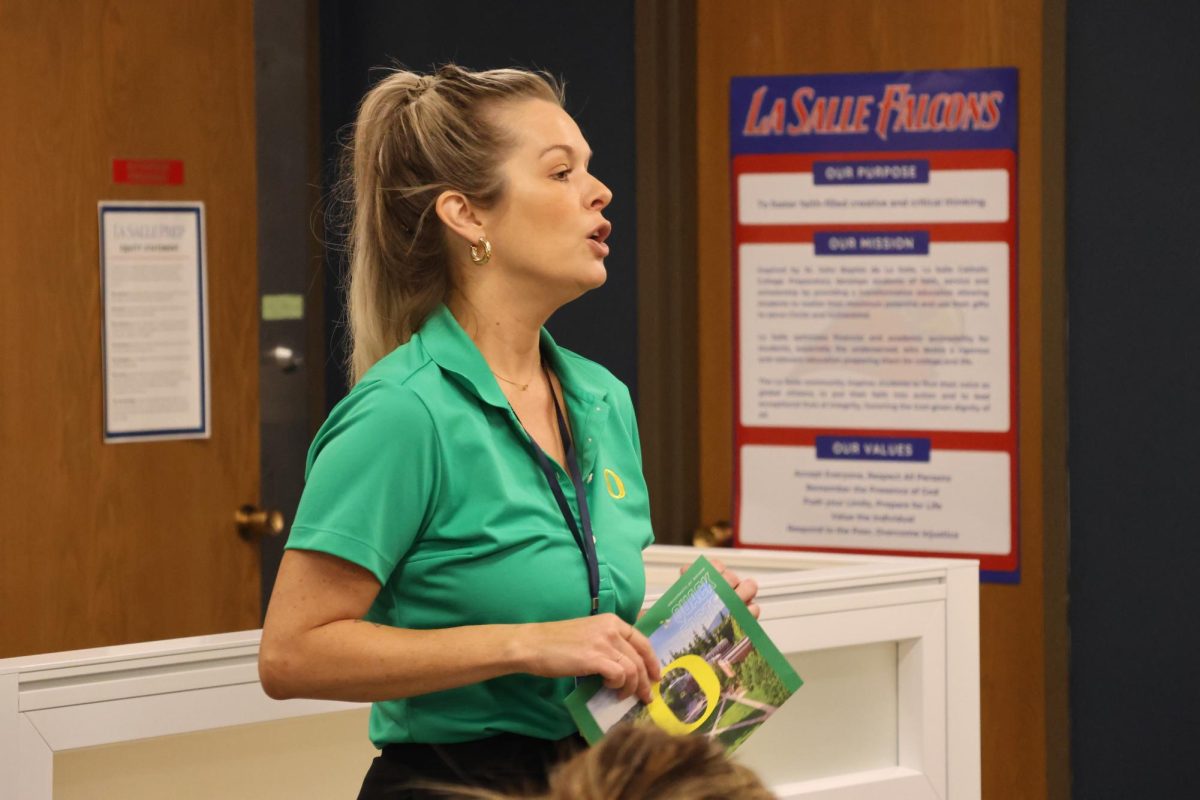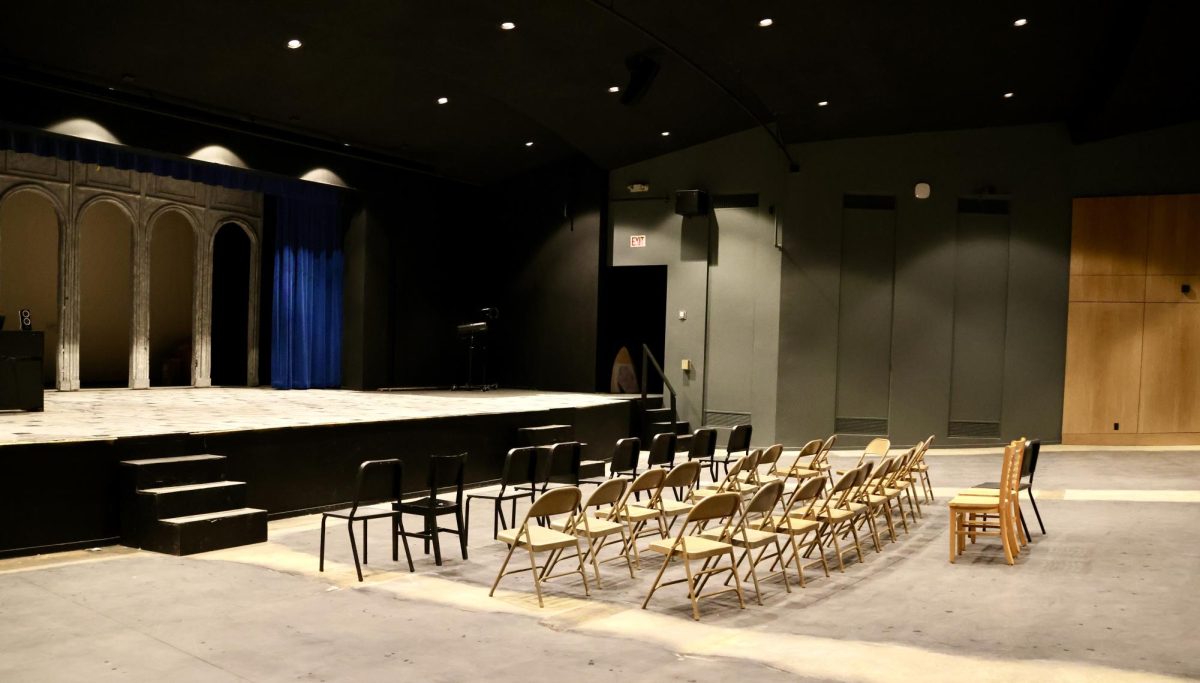On Saturday, April 27, seven La Salle students traveled to Oregon Episcopal School (OES) to attend the annual Oregon Girls Sports Leadership Summit (OGSLS).
Focused on female student athletes, the event aimed to educate participants on leadership and prepare them to be leaders in their own communities. About 200 students were in attendance, coming from schools all over Oregon to spend a day at OES, hearing from panels of female athletes and engaging in activities to help them strengthen their leadership skills.
The event, which lasted from 8:00 a.m. to 3:10 p.m., featured several female athletes, including retired professionals and both former and current college athletes.
For freshman Ella Manson, the experiences that OGSLS’s keynote speaker, Chantel Tremitiere, shared were the most impactful part of the event.
“She faced so many challenges in her life,” Manson said. “But she found a way to overcome them all and came out stronger.”
Tremitiere, a former WNBA athlete, spoke about hard work and sacrifice, sharing her perspective after years of playing professional basketball and the struggles she pushed through on her path to success. Freshman Tilden Babinec-Love especially appreciated Tremitiere’s insight into the importance of hard work in reaching your goals, making the point that you’re not at the “center of the universe,” Babinec-Love said.
“Not that I think that all the time,” Babinec-Love said. “But I think it was nice for someone to say, ‘if you want something, go get it.’ She’s like, ‘bring yourself up.’”
Following Tremitiere’s speech, students were dispersed into “breakout sessions,” where they engaged in an activity called “compass points.” The results of the quiz they took pointed them towards what sort of leader they were: north, south, east, or west, named for the points of a compass.
Each point corresponded to a certain set of characteristics that one might find in different types of leaders — the action leader, the brainstorming/visualization leader, the empathetic leader, or the analytical leader.
Babinec-Love found this activity to be the most useful, not only in learning about her specific leadership style, but in learning from the other students.
“Listening to other people talk about theirs, I would think, ‘Oh, should I try to be more like that?’ or ‘How can I incorporate that into what I do?’” Babinec-Love said. “Just listening to everyone’s different perspectives was really cool.”
Sophomore Amelia St. Amand also found this activity to be helpful in improving her leadership skills.
“Being in sports and especially being an upperclassman next year, it helped me realize helpful ways I can support underclassmen or new people on the team,” St. Amand said.
While the breakout room activities were helpful and fun, St. Amand noted that students from the same school were often grouped together, and thinks that a larger, more varied group of people would improve the overall experience of attending OGSLS.
“I feel like splitting [students] up next year, although it might be uncomfortable, could help people learn more about other people,” St. Amand said, rather than “just talking to people who have very similar experiences to them.”
Freshman Allison Keller learned the most from the panel of female athletes that spoke to the students after the activity. “It’s definitely one thing to do the breakout rooms and see things on paper, but it’s nice to hear people’s stories, what happened to them and how they made it to where they are today,” Keller said. “It takes a lot to be an athlete.”
With the varied ages and experience of the speakers, students were given a wide range of perspective on female leadership in sports, giving insight into the struggles that women face when they pursue a career in sports. They also spoke about different aspects of team sports, exploring the topics of participation and how someone can be a leader even if they are not in a leadership position.
According to St. Amand, they talked about how many sports didn’t used to be as accessible to women, and that they had to fight for the opportunity to play.
“They fought so more women could have the experience that they ended up having, so that there could be more opportunities in the future,” St. Amand said.
The athlete panel was Manson’s favorite part of the day. “It gave me another chance to be around other student leaders and athletes, and that’s a group of people that I resonate with well,” Manson said.
Once the panel wrapped up, students were dismissed to lunch, where they heard from the last speaker of the day, Sam Moore, a former collegiate athlete and sports scientist. She specializes in the effects of female physiology and hormones on their performance and wellbeing as athletes.
Babinec-Love especially appreciated Moore’s perspective, as her speciality is uncommon in the field of sports science.
“She’s like one of the only people that does that,” Babinec-Love said. “It was cool to hear her speak because [periods] are something all women have.”
After Moore spoke, the students were dismissed to their final activity of the day — a breakout room where they formed brackets based on the characteristics and attributes most important to them. Tournament-style, the students whittled down their options until they reached a “Final Four,” helping them to define the qualities they should focus on the most.
Though OGSLS was the length of an average school day — seven hours — Keller found that she didn’t mind the extensive duration.
“It definitely felt like it was going to be really long, and I feel like you go into it thinking it’s going to be really boring, but it was actually really fun,” she said, recommending it for La Salle female student athletes next year.
Babinec-Love thinks that the knowledge she will extend into other parts of her life as well.
“I feel like I really learned stuff that I can use every day,” Babinec-Love said.
Overall, Manson, Babinec-Love, Keller, and St. Amand agreed that the event was a success — it had a little something for everyone, regardless of their age, the sport they play, or their past experiences with sports. It helped them to become better leaders within their teams and had useful insights into their lives beyond sports. All four said that they will be returning next year, and they encourage all Lasallian female athletes to attend OGSLS in the future.




